Column: How I learned to stop worrying and love rooftop solar
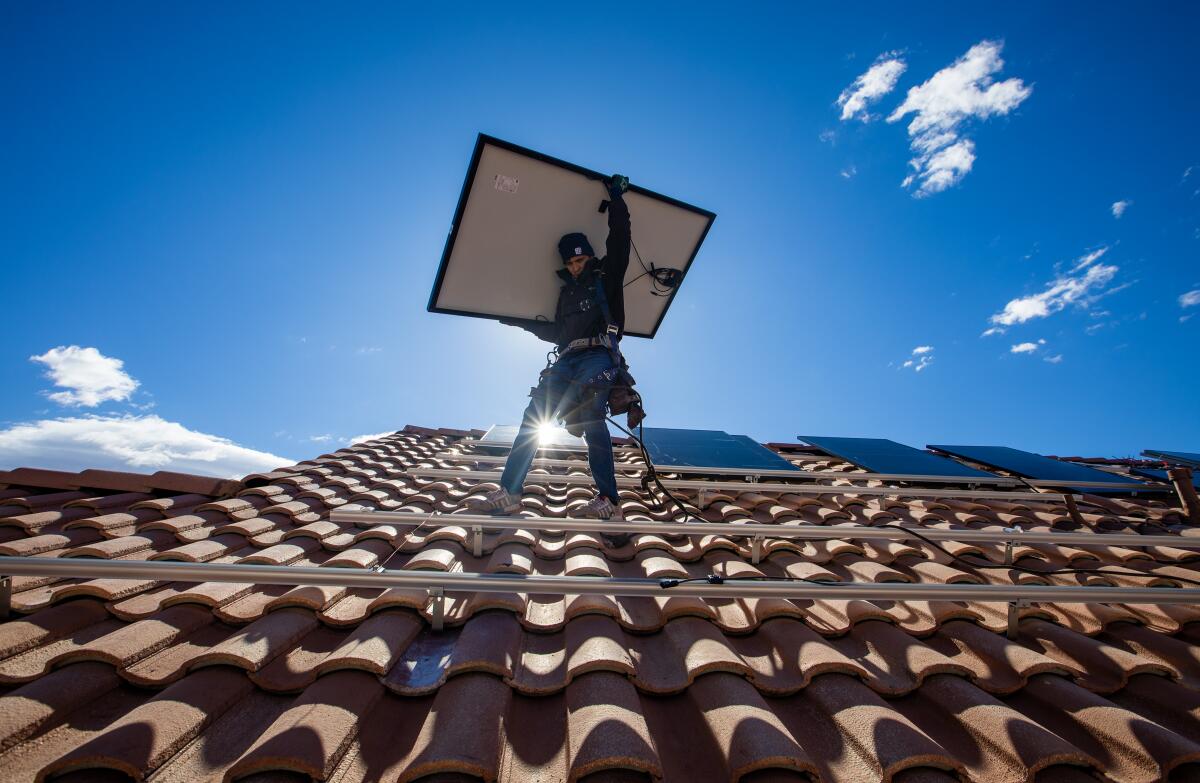
- Share via
As global leaders celebrated a hard-fought agreement to triple the world’s renewable energy production and transition away from fossil fuels, an attorney for the state of California was in a San Francisco courtroom Wednesday, defending a decision by appointees of Gov. Gavin Newsom to dramatically reduce financial incentives for rooftop solar power.
Even in an era of seemingly endless chaos and calamity, it was a record-scratch moment.
Hasn’t Newsom championed efforts to fight the climate crisis? Hasn’t he said repeatedly that we need to stop burning coal, oil and gas as fast as we can? Aren’t rooftop solar installations one of the most popular and effective tools for doing so?
It’s complicated. But not as complicated as I used to think it was.
You're reading Boiling Point
Sammy Roth gets you up to speed on climate change, energy and the environment. Sign up to get it in your inbox twice a week.
You may occasionally receive promotional content from the Los Angeles Times.
Wednesday’s courtroom arguments — which began less than 12 hours after nearly 200 countries agreed on a flawed but useful plan to ratchet down planet-warming pollution — centered on a California program called net energy metering. For years, it has required utility companies to compensate solar-powered homes and businesses for the electricity they generate.
The state’s five-member Public Utilities Commission voted a year ago this week to slash compensation for customers of Southern California Edison, Pacific Gas & Electric and San Diego Gas & Electric who chose to install solar panels starting in April. Newsom’s appointees were persuaded by the monopoly utility companies — and several other groups, as I’ll discuss shortly — that the costs of the solar program were fueling higher energy bills for millions of families who couldn’t afford rooftop panels.
The agency’s decision infuriated many environmental groups, several of which sued to have it overturned. They said the Public Utilities Commission failed to consider all the benefits of rooftop solar and was basically doing the bidding of Edison, PG&E and Sempra Energy subsidiary SDG&E. Those investor-owned utilities stand to make loads of money by expanding the power grid to accommodate solar and wind farms, but they could see their profits diminished if a lot more rooftop solar is built.
All of which brings us to Wednesday’s court hearing. It lasted about 75 minutes — and at least to me, it was confounding.
The lawyers and judges spent part of the time debating the meaning of the word “the” — literally “the”! — in a state law passed 10 years ago. They referenced arcane regulatory codes and courtroom precedents that have nothing to do with climate change. They rattled off a series of mind-numbing acronyms as they pondered the utilities commission’s legal responsibilities.
Really? At a moment in human history when time is running dangerously short to prevent a future of ever-deadlier heat waves, wildfires and storms, these are the kinds of arguments we’re having? Even in California — a self-proclaimed leader in battling global warming — we’re quibbling over verbiage instead of working together to accelerate clean energy?
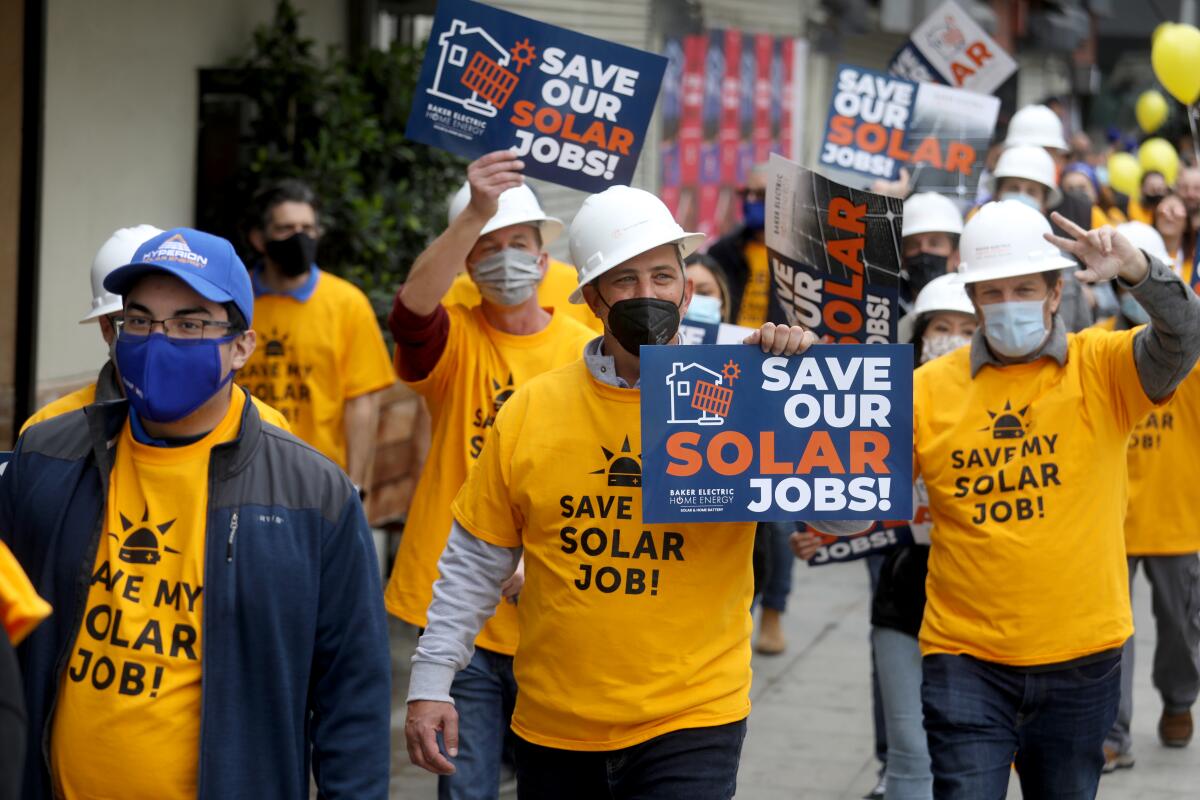
I mean no disrespect to the lawyers and judges, who were doing their jobs.
But the more I’ve covered the rooftop solar debate, the more I’ve grown frustrated with Newsom.
To be clear, the governor has done lots of good work on clean energy. He got the Legislature to pass a law banning new oil and gas wells near homes, and ordered a regulation that will require most if not all new cars to be electric or plug-in hybrids by 2035. If he’s ever the Democratic Party’s presidential nominee, he should be the easy choice for voters who give a damn about climate change, with most of the Republican Party continuing to serve as a propaganda machine for the fossil fuel industry.
But on rooftop solar, Newsom has largely stayed quiet.
When the Public Utilities Commission released its initial proposal to cut solar incentives for single-family homes, he briefly broke his public silence, saying that “changes need to be made.” But his office declined to comment on smaller but still substantial cuts that the agency ultimately approved, outside a brief positive reference in a news release. Newsom’s team similarly refused to tell me where the governor stood on last month’s commission decision reducing solar payments for apartment dwellers.
The governor’s reluctance to weigh in publicly is likely an act of deference to organized labor.
As I’ve written previously, California’s politically powerful labor unions have long fought to disadvantage rooftop solar companies, most of which are nonunion. As the Golden State targets 100% clean energy, organized labor wants to see more of our power come from sprawling solar farms in the desert, which are typically built by union workers who make higher salaries.
As an added benefit, large solar and wind farms often require lengthy power lines to send their electricity to faraway cities such as Los Angeles — projects that create more jobs. Just this week, the International Brotherhood of Electrical Workers announced it had signed an agreement to build the 580-mile SunZia power line across Arizona and New Mexico, which will help bring low-cost wind energy to Southern California. The power line and wind farm are expected to create more than 2,000 construction jobs.
As a union member myself, I’m sympathetic to their cause.
I’m also amenable to the idea that rooftop solar incentives need to change.
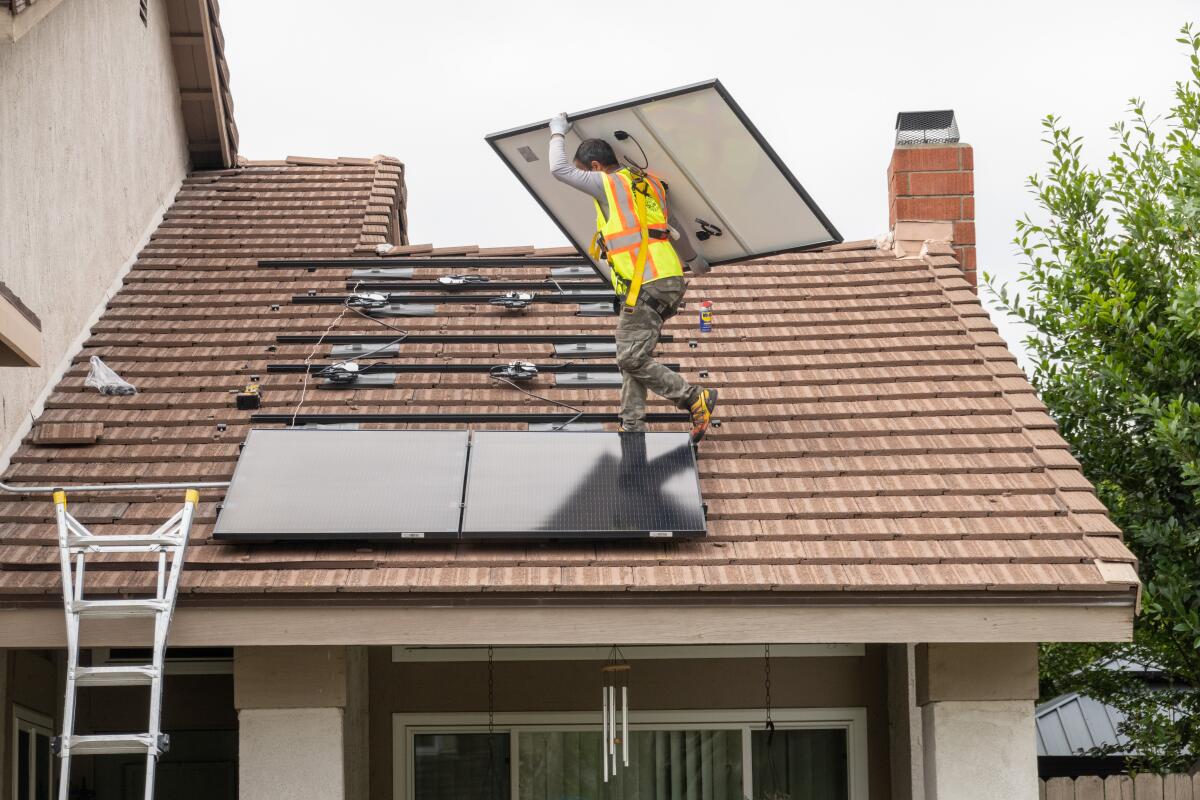
Many of the people arguing that net metering has caused a large “cost shift” — benefiting wealthy families that can afford solar panels at the expense of lower-income families that can’t — are thoughtful, well-meaning individuals whose perspectives I value and respect. They include staffers at the Natural Resources Defense Council, one of the nation’s largest environmental advocacy groups; the Utility Reform Network, a consumer watchdog; and the Public Utilities Commission’s Public Advocates Office.
I don’t buy the argument made by some rooftop solar advocates that those net metering critics — and academic researchers who have reached similar conclusions — are utility-industry shills. They’re plenty willing to criticize Edison and PG&E in other instances, and they’ve done their homework. They insist net metering has transferred billions of dollars from the poor to the rich.
And just because Edison and PG&E happen to agree with them doesn’t mean they must be wrong.
Yes, the utility companies have a financial motive to undermine household solar — as do their brethren in other states, many of which have waged similar campaigns. But they’re right when they point out that rising electric rates — an especially big problem in California — threaten to keep us hooked on fossil fuels by scaring people away from electric cars and electric appliances.
If you ask rooftop solar installers and their supporters, net metering has little to do with the price of electricity.
Who’s right? Well, I’m not especially hopeful that California’s First District Court of Appeal will settle the debate.
Wednesday’s hearing honed in on a 2013 law ordering the Public Utilities Commission to revise the net metering program “based on the costs and benefits” of rooftop solar. The law says the program’s “total benefits” should roughly equal its “total costs.”
Attorneys for the organizations that sued the commission — the Center for Biological Diversity, Environmental Working Group and Protect Our Communities Foundation — told the three-judge panel that Newsom’s appointees violated the law by failing to consider several “societal benefits” of solar, beyond electric-bill savings for households with rooftop panels.
For instance, they said the agency hadn’t accounted for “resiliency” benefits — the ability of solar systems, at least when paired with batteries, to keep homes powered during electric-grid outages and protect residents from scorching heat waves that can kill. The environmental groups also noted that the clean energy produced by rooftop solar can result in less pollution from gas-fired power plants in vulnerable communities — and less wildlife habitat damaged by large solar farms and wind turbines.
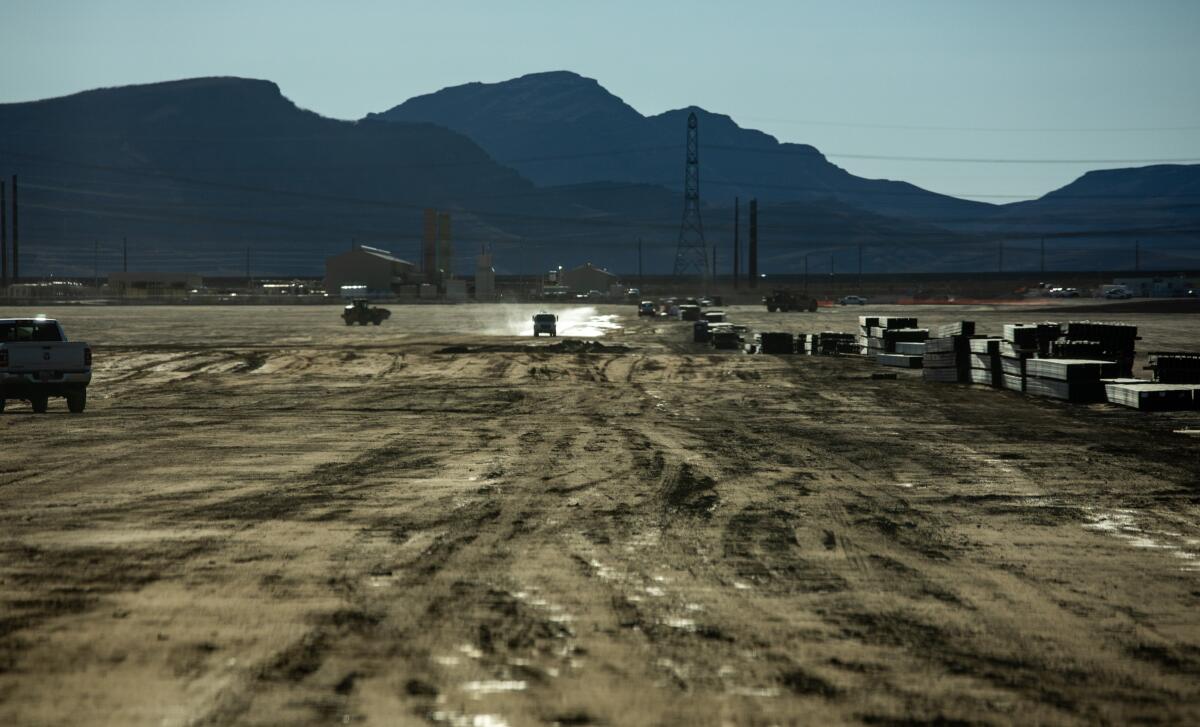
Presiding Justice Alison Tucher seemed especially interested to understand why the Public Utilities Commission hadn’t included those virtues in their cost-benefit calculations. When an attorney representing the monopoly utilities said that the 2013 law didn’t require the agency to consider every single benefit of rooftop solar, Tucher asked, “Why on Earth not?”
She raised a similar question during a back-and-forth with Edward Moldavsky, a lawyer for the utilities commission.
“I recognize the statutory language [in the 2013 law] says we want the costs to equal the benefits. But just as a matter of logic, if we could have benefits that could exceed costs, wouldn’t that be much better?” Tucher asked.
“That’s not what the statute says,” Moldavsky replied.
“I’m asking you to put that aside for a minute, because I have concerns about whether we’re properly understanding the statute,” the judge responded. “I mean, if benefits means benefits, and costs mean costs, then I think we’d want the benefits to exceed the costs by as large a margin as possible.”
Even if the Public Utilities Commission was unfair to rooftop solar, should it be up to the court to say so? Moldavsky went on to argue that the court should grant substantial “deference” to the utilities commission — that as long as the agency made a good-faith effort to follow the law, the judges should submit to its expertise and not interfere, as required by legal precedents.
That argument seemed to sit well with Justice Victor Rodríguez. He suggested that the commission was in a “tough position,” with some critics accusing the agency of not cutting rooftop solar compensation enough. He said the commission had to make its “best effort” at revising net metering knowing that no matter what, “there were going to be some winners and losers.”
“Reasonable minds can differ about whether it did the best policy choice,” Rodríguez said.
He’s absolutely right. If there were easy answers here, we wouldn’t have spent the last decade having this argument.
But the more I’ve reported on rooftop solar — the more time I’ve spent talking with solar installers and climate activists and utility executives — the more I’ve realized that continuing to debate net metering is a giant waste of time.
Rooftop solar is a powerful force for good. There are more than 1.8 million solar systems on California homes and businesses, and they generate about 11% of the state’s electricity. Even the utilities understand we’ll need a lot more of them, with Edison’s latest vision for 100% clean energy assuming the amount of small-scale solar on the power grid will eventually double.

We won’t be able to stem the climate crisis with small-scale solar alone — not even if we get serious about putting solar panels over parking lots, irrigation canals and warehouses. Even the most optimistic researchers say we’ll need a huge number of giant solar farms, wind turbines and long-distance power lines to have any hope of ending our reliance on coal, oil and gas.
I’ve said it before, and I’ll say it again: There’s no such thing as a perfect climate solution.
We need to keep throwing our support behind sprawling solar farms that can destroy wildlife habitat, power lines that can line the pockets of wealthy investors, and induction stoves that many people consider inferior to cooking with gas. We need to start driving electric vehicles, even if they’re not quite as convenient as the gasoline-fueled cars we’re used to (at least not yet).
And yes, we need to keep prioritizing rooftop solar — even if it costs more upfront than investing only in big solar farms that benefit from economies of scale. The “societal benefits” of rooftop solar are real. We need as much of it as possible.
This is where Newsom could show some leadership — if he were willing to risk the ire of those labor unions.
If he wanted to, Newsom could cajole his Public Utilities Commission appointees to take another crack at revising net metering, and return to the old solar incentives until then. Or if he were worried that doing so would send electricity rates out of control, he could use his political might to compel Sacramento lawmakers to set aside billions more dollars for rooftop solar rebates — much as he did when he when he persuaded the Legislature to extend the life of the Diablo Canyon nuclear power plant.
But he hasn’t done any of that. Instead, the governor has stood by and watched as decisions made by his appointees have started to crash the rooftop solar market — and as the utilities commission has approved additional changes that critics say will undermine batteries, too, even as the agency insists that one of its main goals is to promote energy storage alongside solar.
It’s not too late for Newsom to step up. It’s not too late for him to sacrifice some political capital and commit to ending a decade of bitter infighting, in the name of setting a positive example for the rest of the world as temperatures continue to rise.
I have no idea if he’ll do that. His office declined to comment for this column.
In the continued absence of real leadership by the governor, we’ll have to wait and see what the Court of Appeal decides. A ruling on net metering is expected within 90 days. Either side could appeal that ruling to the California Supreme Court.
In the meantime, the world will keep getting warmer. And Newsom’s claims to climate leadership will keep getting weaker.
ONE MORE THING
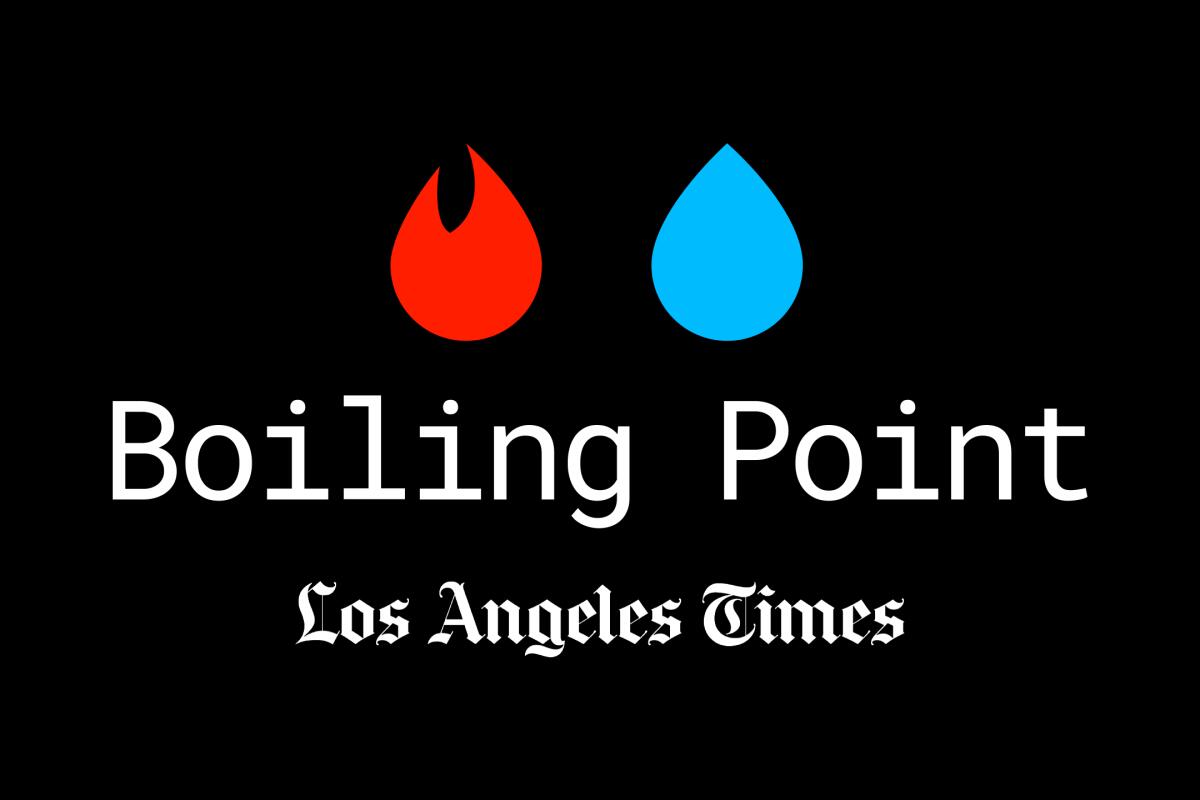
As I’ve mentioned previously, I’m still getting used to to being The Times’ climate columnist.
When I wrote my first column in October, I took a more measured approach to the rooftop solar debate, explaining the various competing arguments and not stating my own views quite so clearly. This time, I decided I could add more to the conversation by weighing in more strongly. I’ve been reporting on net metering in California since 2014, and I hope I’ve developed some useful insights during that time. I want to do my small part to help solve this problem — and move on to bigger ones.
That said, I have every intention of continuing to feature well-reasoned arguments and ideas that don’t comport with my own — and to telling stories that reflect the complexities of our climate and energy challenges (which I hope this column does).
So please, keep emailing and calling me to tell me what you think. Please keep responding to my emails and calls, too.
And on we go.
This column is the latest edition of Boiling Point, an email newsletter about climate change and the environment in California and the American West. You can sign up for Boiling Point here. And for more climate and environment news, follow @Sammy Roth on X.
Toward a more sustainable California
Get Boiling Point, our newsletter exploring climate change, energy and the environment, and become part of the conversation — and the solution.
You may occasionally receive promotional content from the Los Angeles Times.






